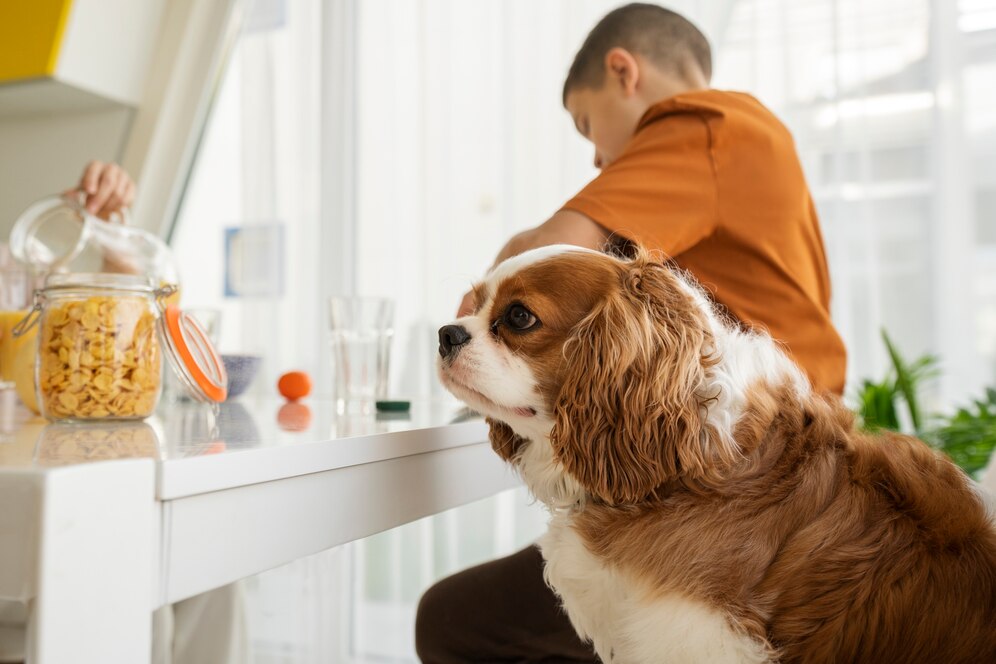In recent years, the integration of Internet of Things (IoT) technology into various industries has revolutionized how we interact with the world around us. One particularly exciting application is in the realm of pet care. Developing an IoT application for pet care involves combining hardware and software solutions to enhance the well-being of pets and provide peace of mind for their owners. This comprehensive guide will walk you through the essential steps and considerations in creating a cutting-edge IoT application tailored for pet care.
Understanding the Basics of IoT in Pet Care
IoT technology in pet care involves connecting devices to the internet to collect and share data, allowing for remote monitoring and management. These devices can include smart collars, feeders, cameras, and environmental sensors. By leveraging IoT, pet owners can monitor their pets' health, location, and environment in real-time, ensuring better care and immediate response to any issues.
Key Features of an IoT Pet Care Application
1. Real-Time Tracking and Monitoring
Real-time tracking is crucial for pet safety. Implementing GPS technology in smart collars can help pet owners track their pets' movements and receive alerts if they leave designated safe zones. Integrating health monitoring features, such as heart rate and activity level sensors, can provide valuable insights into a pet's well-being.
2. Automated Feeding and Nutrition Management
Automated feeders connected to the IoT application can dispense food at scheduled times and monitor the pet's eating habits. This ensures that pets receive their meals on time and in the correct portions, helping to maintain a balanced diet. The application can also recommend dietary adjustments based on the pet's health data.
3. Environmental Monitoring
Sensors that monitor environmental conditions such as temperature, humidity, and air quality can be critical for pet health, especially for animals with specific needs. Alerts can be sent to pet owners if conditions fall outside of optimal ranges, allowing for timely interventions.
4. Health and Wellness Tracking
Collecting data on a pet's physical activity, sleep patterns, and overall behavior can help identify health issues early. The IoT application can analyze this data and provide reports to veterinarians, facilitating better diagnosis and treatment plans.
5. Interactive Features
Incorporating interactive features such as remote-controlled toys and cameras with two-way audio can enhance the bond between pets and their owners. Owners can engage with their pets even when they are not physically present, reducing anxiety and loneliness in pets.
Steps to Develop an IoT Application for Pet Care
Step 1: Define the Objectives and Target Audience
Begin by identifying the specific needs of pet owners and the problems your IoT application aims to solve. Understanding your target audience will help in designing a user-friendly interface and selecting the right features to include in the application.
Step 2: Choose the Right Hardware
Selecting the appropriate hardware is crucial for the success of your IoT application. This includes choosing sensors, GPS modules, cameras, and other components that are reliable and compatible with your software. Partnering with reputable hardware manufacturers can ensure quality and durability.
Step 3: Develop the Software
The software development phase involves creating the application that will interface with the hardware. This includes:
- Mobile and Web Application Development: Design a user-friendly interface for both mobile and web platforms to allow users to interact with the IoT devices seamlessly.
- Cloud Integration: Implement cloud services to store and process data collected from IoT devices. This allows for scalable data management and real-time analytics.
- Data Security: Ensure robust security measures to protect user data and prevent unauthorized access. This includes encryption, secure communication protocols, and regular security updates.
Step 4: Implement Data Analytics
Data analytics play a significant role in providing valuable insights from the data collected by IoT devices. Implement algorithms to analyze pet behavior, health patterns, and environmental conditions. Use this data to offer personalized recommendations and alerts to pet owners.
Step 5: Testing and Quality Assurance
Thorough testing is essential to ensure the reliability and functionality of the IoT application. This includes:
- Unit Testing: Test individual components and features to ensure they work as intended.
- Integration Testing: Ensure that all hardware and software components work together seamlessly.
- User Testing: Conduct beta testing with real users to gather feedback and make necessary improvements.
Step 6: Launch and Marketing
Once the application is thoroughly tested and refined, it's time to launch it to the market. Develop a comprehensive marketing strategy to reach your target audience. Utilize social media, partnerships with pet care brands, and other digital marketing techniques to promote your IoT application.
Challenges and Considerations
1. Data Privacy and Security
Given the sensitive nature of the data collected, ensuring data privacy and security is paramount. Implementing strong encryption methods and adhering to data protection regulations is essential to gain user trust.
2. Battery Life
IoT devices, particularly those that are wearable like smart collars, need to have a long battery life to be practical. Research and invest in efficient power management solutions to enhance the user experience.
3. User Education
Educating pet owners on how to use the IoT application effectively is crucial. Provide comprehensive guides, tutorials, and customer support to help users maximize the benefits of your product.
Future Trends in IoT Pet Care
The future of IoT in pet care holds exciting possibilities. Advancements in artificial intelligence and machine learning will enable even more sophisticated health monitoring and predictive analytics. Furthermore, the integration of blockchain technology could enhance data security and transparency.
In conclusion, developing an IoT application for pet care involves a combination of innovative hardware, robust software, and a deep understanding of pet owners' needs. By focusing on real-time monitoring, automated feeding, environmental sensors, health tracking, and interactive features, you can create a comprehensive solution that enhances the lives of pets and their owners.





Comments